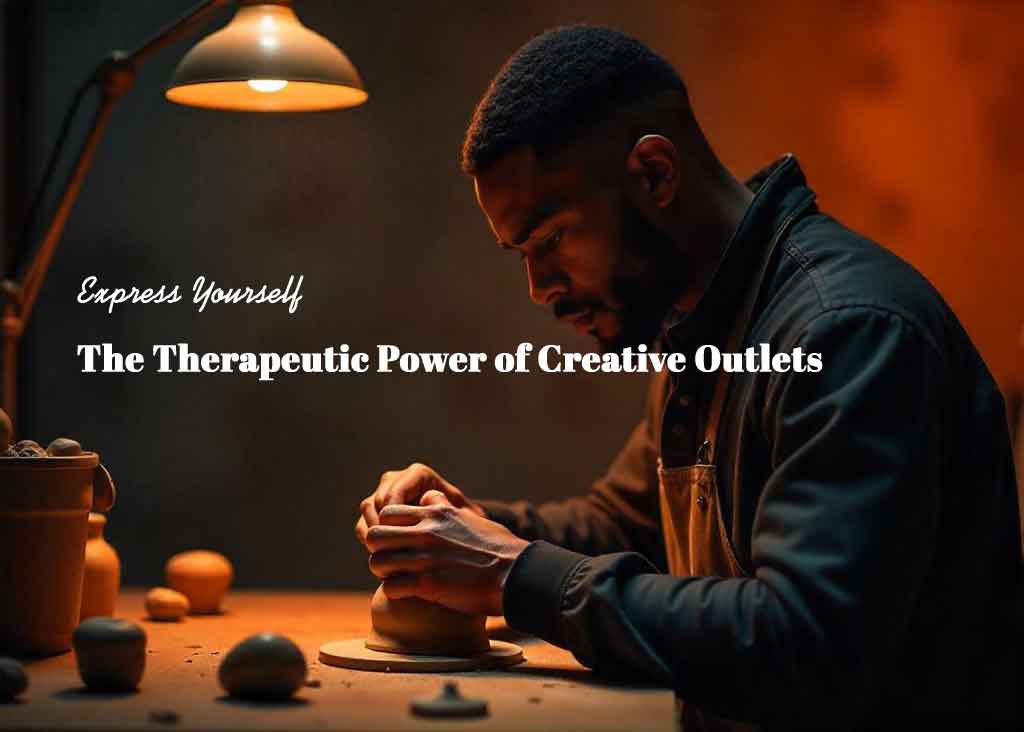Express Yourself: The Therapeutic Power of Creative Outlets

Engaging in creative activities such as art, music, and other forms of self-expression has been shown to significantly benefit mental health and wellbeing. These activities allow individuals to connect with their inner thoughts and emotions while providing a productive way to navigate stress and anxiety. Let’s dive into how these outlets can positively influence mental health.
The Therapeutic Value of Art
Art serves as a powerful medium for emotional expression and healing. Whether through painting, drawing, or sculpting, art allows individuals to articulate feelings that may be difficult to express verbally. Studies have shown that creating art reduces cortisol levels, the hormone linked to stress, and fosters a sense of accomplishment.

Moreover, engaging in art can help break repetitive and negative thought cycles by forcing the mind to focus on the present moment. Practices like adult coloring books or sketching are particularly effective for mindful relaxation. You don’t need to be an expert artist; the act of creating is what’s most important.
Music’s Soothing Power
Music, as both a creative outlet and a sensory experience, profoundly impacts mental wellbeing. Listening to music can calm the nervous system, boost mood, and even improve cognitive function. Creating music—whether by singing, playing an instrument, or composing—goes a step further by channeling emotions into a structured, expressive form.
Studies reveal that group musical activities, like participating in choirs or bands, enhance social bonds and contribute to a sense of belonging. Meanwhile, genres like classical or lo-fi music are often used for relaxation and meditation, setting a calming atmosphere that promotes inner peace.
Expression Through Writing and Other Forms
Writing stories, poetry, or personal journals can be another transformative outlet. Journaling, for instance, helps individuals process complex emotions by putting their thoughts into words. Similarly, creative writing enables people to explore their imaginations while processing life experiences in a meaningful way.
Other expressive activities like dance, drama, or photography also offer unique routes for emotional release and connection. These creative forms enhance self-awareness and provide ways to articulate emotional landscapes that may seem overwhelming.

TPractical Steps to Get Started
- Experiment Early: Dive into different activities, whether it's signing up for a local art class, joining a music group, starting a journal, or grabbing your phone for creative photography.
- Be Consistent: Dedicate regular time each week to your chosen creative outlet. Consistency amplifies the mental health benefits.
- Remove Self-Judgment: Remember, you don’t need to produce a masterpiece. The process, not the product, matters the most.
- Seek Community: Explore group workshops, clubs, or online forums to connect with others who share similar creative interests.
Conclusion
Creative outlets like art, music, and various forms of expression can act as powerful tools for maintaining mental wellbeing. By embracing creativity, individuals can find relief from emotional challenges while gaining a renewed sense of purpose and connection with themselves and others. Making space for creativity in daily life doesn’t just enrich the mind—it nurtures the soul.
Note: This is for informational purposes only and should not replace professional medical advice. Always consult a healthcare professional before starting any new treatment or session.
Join our community today and take the first step towards a healthier, more balanced you.
Photo: @Freepik, @unsplash, @Microsoft Designer

